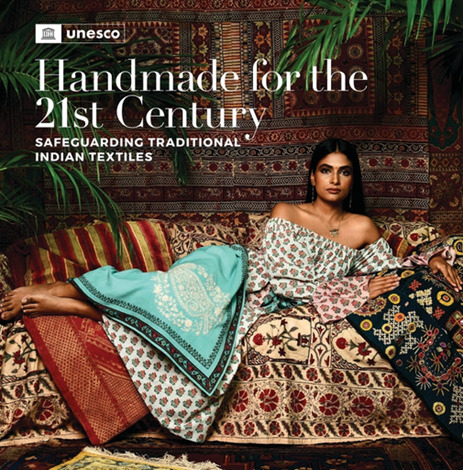In a world where mass production and fast fashion often take center stage, the renaissance of handcrafted textiles represents a return to tradition, authenticity, and sustainable practices. Artisanal textiles have been gaining prominence in the fashion industry, offering a refreshing alternative to the cookie-cutter garments churned out by industrial machines. The resurgence of handcrafted textiles isn’t merely a trend; it’s a movement that embodies a deep respect for cultural heritage, craftsmanship, and sustainable fashion. Let’s explore the captivating world of artisanal textiles and their growing influence on the textile and apparel industry.
A Tapestry of Tradition and Craftsmanship
Artisanal textiles are more than just fabrics; they tell stories of generations of skill and tradition. These fabrics are often handwoven, hand-dyed, or hand-embroidered, showcasing the rich cultural heritage of the regions where they originate. From Indian saris to Japanese kimono, from Peruvian alpaca wool to Moroccan silk, these textiles are not just garments; they are cultural artifacts.
One of the compelling aspects of artisanal textiles is the connection to the past. Craftsmen and women often employ age-old techniques that have been passed down through generations. The textiles serve as living records of the customs, techniques, and artistry of the cultures from which they originate.

Sustainable and Eco-Friendly
With sustainability at the forefront of the fashion industry, artisanal textiles offer a green alternative to mass-produced synthetic fabrics. They are often made from natural and organic fibers, making them biodegradable and environmentally friendly. By supporting the production of handcrafted textiles, consumers and designers alike are contributing to the reduction of textile waste and promoting sustainable fashion practices.
Individuality and Uniqueness
Each handcrafted textile is a unique piece of art, showcasing slight variations and imperfections that are celebrated rather than concealed. These textiles are not created with uniformity in mind, and that’s what makes them so special. The imperfections become part of their charm, reflecting the hands that created them. In a world where “one-size-fits-all” has dominated for so long, the individuality of artisanal textiles is a breath of fresh air.

Empowering Communities
The revival of handcrafted textiles empowers local communities, especially in developing regions where traditional craftsmanship provides a livelihood. By investing in these textiles, consumers contribute to the preservation of artisanal skills and support fair wages for those who create them. Many organizations and fashion brands are working directly with artisan communities to ensure they receive fair compensation for their work.
A Versatile Fashion Trend
Artisanal textiles are no longer confined to traditional clothing; they are now a staple in modern fashion. Designers are incorporating these textiles into contemporary clothing and accessories, creating a fusion of traditional and contemporary styles. From bohemian chic to high fashion runways, artisanal textiles are making their mark on the fashion world.

The Future of Artisanal Textiles
As the demand for handcrafted textiles grows, we can expect a continued resurgence in this art form. Designers and artisans are collaborating to create innovative pieces that honor tradition while embracing modern aesthetics. The future of artisanal textiles lies in their ability to adapt to changing consumer preferences while staying true to their roots.
In conclusion, the revival of handcrafted textiles represents a refreshing change in the fashion industry. It’s a celebration of tradition, sustainability, and individuality. It empowers communities, honors cultural heritage, and paves the way for a more conscious and environmentally friendly fashion future. The allure of artisanal textiles is not just in the garments themselves but in the stories and traditions they carry, making them a powerful and enduring force in the textile and apparel industry.
Conclusion
As we witness the renaissance of handcrafted textiles in the fashion industry, it becomes evident that this movement is not merely a reaction to the fast-paced, mass-produced world of fashion. It is a profound statement about our desire for authenticity, connection, and sustainability. Artisanal textiles are a bridge between our modern, rapidly changing world and the timeless traditions of our ancestors. They tell stories, empower communities, and champion individuality in an industry that often favors conformity. In the era of artisanal revival, the textiles we wear are more than just fabrics; they are threads that connect us to the past and weave a more sustainable, culturally enriched, and uniquely stylish future.
Reference:
- “Ethnic Chic: A History of Fashionable Clothing from the Borders of the Mekong” by Hedi Daugaard
- “Artisanal Work, Women’s Agency and Handmade Production: The Case of Turkish Carpets” by Lale Yalçın-Heckmann (Published in the Journal of Gender Studies)
- “The Revival of Handcrafted Textiles” – Textile World: This article discusses the resurgence of handcrafted textiles and their impact on the fashion industry.
News Sources : textilefocus
















